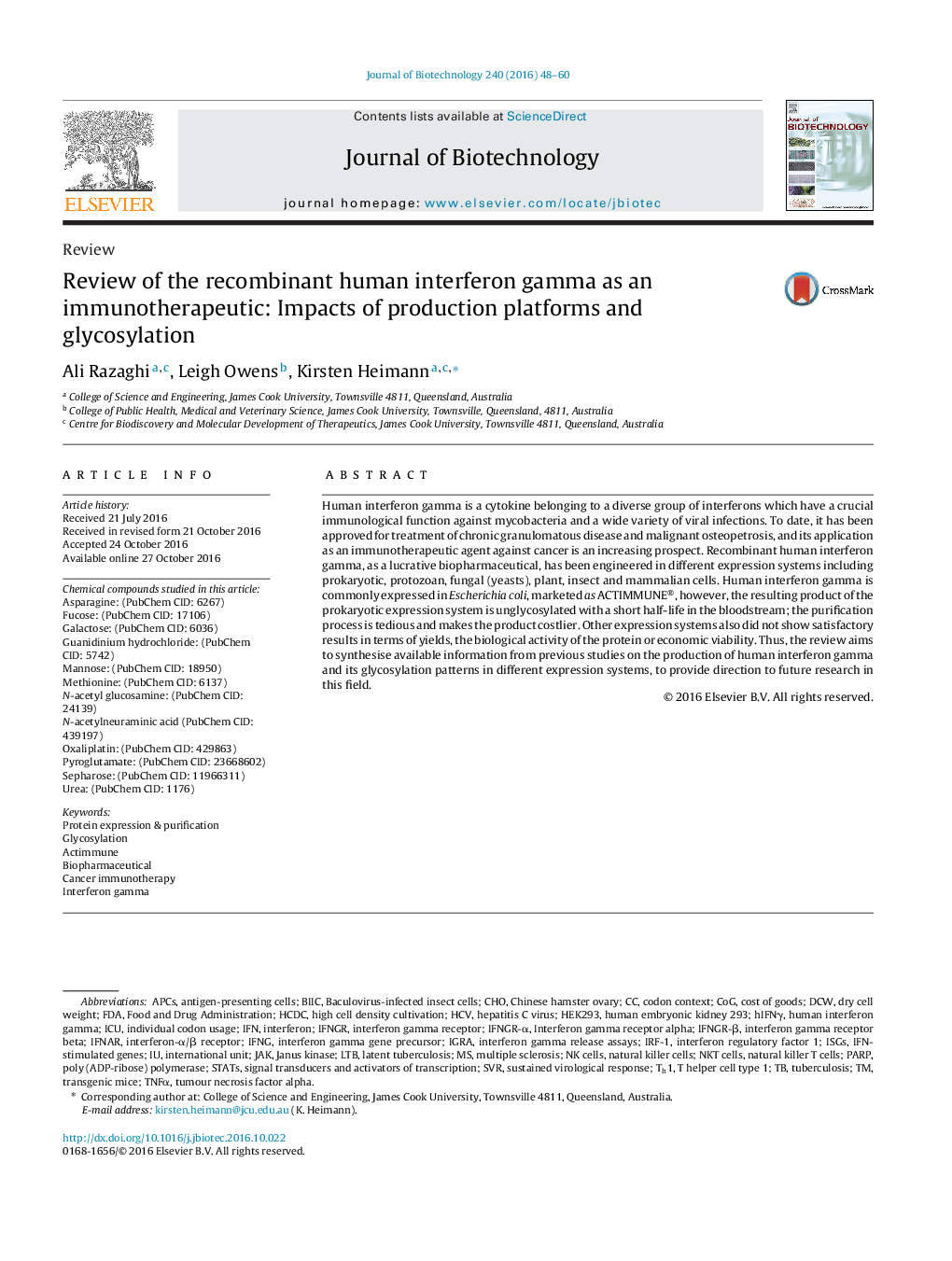| Article ID | Journal | Published Year | Pages | File Type |
|---|---|---|---|---|
| 6452119 | Journal of Biotechnology | 2016 | 13 Pages |
â¢Recombinant hIFNγ is an approved biopharmaceutical and has a potential to be used as an immunotherapeutic against cancer.â¢Human interferon gamma (hIFNγ) is commercially produced in Escherichia coli, branded as Actimmune®.â¢Economic alternatives for the production of hIFNγ are lacking despite research on other expression systems.â¢Expression systems affect the glycosylation structure of recombinant hIFNγ which affects its half-life and activity.â¢Glycosylation of mammalian hIFNγ is most similar to the native form, but economics of these systems need improving.
Human interferon gamma is a cytokine belonging to a diverse group of interferons which have a crucial immunological function against mycobacteria and a wide variety of viral infections. To date, it has been approved for treatment of chronic granulomatous disease and malignant osteopetrosis, and its application as an immunotherapeutic agent against cancer is an increasing prospect. Recombinant human interferon gamma, as a lucrative biopharmaceutical, has been engineered in different expression systems including prokaryotic, protozoan, fungal (yeasts), plant, insect and mammalian cells. Human interferon gamma is commonly expressed in Escherichia coli, marketed as ACTIMMUNE®, however, the resulting product of the prokaryotic expression system is unglycosylated with a short half-life in the bloodstream; the purification process is tedious and makes the product costlier. Other expression systems also did not show satisfactory results in terms of yields, the biological activity of the protein or economic viability. Thus, the review aims to synthesise available information from previous studies on the production of human interferon gamma and its glycosylation patterns in different expression systems, to provide direction to future research in this field.
Graphical abstractDownload high-res image (150KB)Download full-size image
